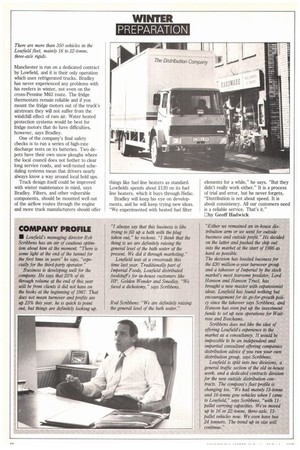COMPANY PROFILE
Page 46

If you've noticed an error in this article please click here to report it so we can fix it.
• Lowfield's managing director Rob Scribbens has an air of cautious optimism about him at the moment. "There is some light at the end of the tunnel for the first time in years" he says, "especially for the third-party operator."
Business is developing well for the company. He says that 25% of its through volume at the end of this year will be from clients it did not have on the books at the beginning of 1987. That does not mean turnover and profits are up 25% this year, he is quick to point out, but things are definitely looking up. "I always say that this business is like trying to fill up a bath with the plug taken out," he reckons. "I think that the thing is we are definitely raising the general level of the bath water at the present. We did it through marketing."
Lowfield was at a crossroads this time last year. Traditionally part of Imperial Foods, Lowfield distributed foodstuffs for in-house customers like HP, Golden Wonder and Smedley. "We faced a dichotomy," says Scribbens. "Either we remained an in-house distribution arm or we went for outside business and outside profit." He decided on the latter and pushed the ship out into the market at the start of 1986 as hard as possible.
The decision has boosted business for the £30 million-a-year turnover group and a takeover of Imperial by the stock market's most fearsome predator, Lord Hanson and Hanson Trust, has brought a new master with expansionist ideas. Lowfield has found nothing hut encouragement for its go-for-growth policy since the takeover says Scribbens, and Hanson has even put up the investment funds to set up new operations for Waitrose and Beechams.
Scribbens does not like the idea of offering Lowfield's experience to the market as a consultancy. It would be impossible to be an independent and impartial consultant offering companies distribution advice if you run your own distribution group, says Scribbens.
Lowfield is split into two divisions, a general traffic section of the old in-house work, and a dedicated contracts division for the new outside distribution contracts. The company's fleet profile is changing too. "We had mainly 13-tonne and 16-tonne gvw vehicles when I came to Lowfield," says Scribbens, "with 11pallet aiming capacities. We've moved up to 16 or 22-tonne, three-axle, 13pallet vehicles now. We even have two 24 towers. The trend up in size will continue."












































































































































































